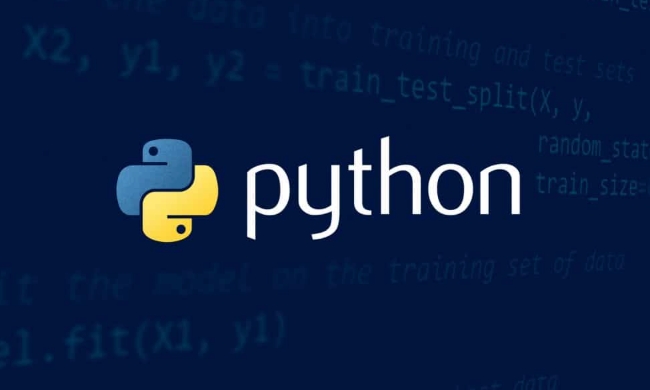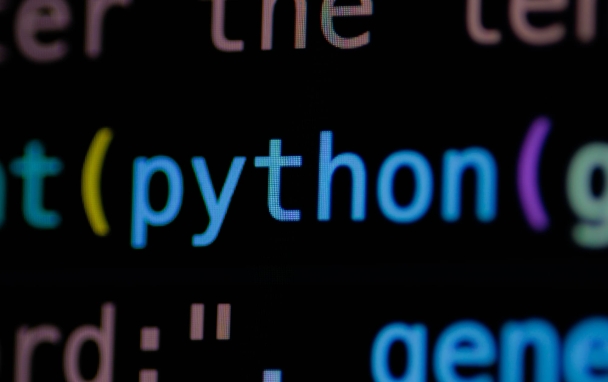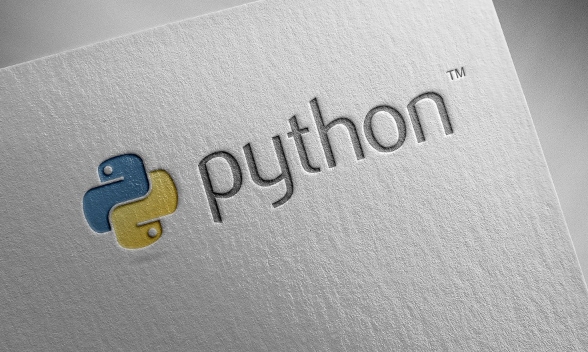Comparing Asyncio and Threading for Concurrency in Python
Jul 09, 2025 am 02:05 AMTo choose the concurrency method of Python, it needs to be determined based on the task type and performance requirements. For CPU-intensive tasks, multiprocessing should be used, because threads cannot be truly parallel due to GIL limitations; for I/O-intensive tasks, asyncio is suitable for high-throughput scenarios, and uses event loops and coroutines to achieve low overhead concurrency; while threading is suitable for collaboration with existing synchronization libraries to handle blocking I/O in a simple way. Both have their own applicable scenarios, not absolute advantages and disadvantages.

Python offers multiple ways to handle concurrency, and two of the most common approaches are using asyncio for asynchronous programming and the threading module for multi-threaded execution. Choosing between them depends on what kind of workload you're dealing with and what kind of performance gains you're aiming for.

Let's break it down based on real-world usage patterns and typical scenarios.

CPU-bound vs I/O-bound Tasks
This is the first thing to consider when choosing between asyncio and threading .
- CPU-bound tasks involve heavy computings like data processing or image manipulation.
- I/O-bound tasks wait on external resources — things like network requests, disk reads/writes, or database queries.
For CPU-bound work:

- Python's Global Interpreter Lock (GIL) limits true parallelism in threads.
- So even with threading, only one thread runs at a time in CPython.
- In such cases, multiprocessing is usually better than both asyncio and threading.
For I/O-bound work:
- Both
asyncioandthreadingcan help you make better use of waiting time. - But they do so in different ways.
So if your task spends more time waiting than computing, keep reading.
How Asyncio Works Under the Hood
asyncio is built around an event loop and coroutines. Instead of relying on OS-level threads, it uses cooperative multitasking.
What that means:
- You write functions with
async def, and call them withawait. - These coroutines volunteer yield control back to the event loop when they hit an
awaitpoint (like a network request). - The event loop then picks up another coroutine to run.
Benefits:
- Low memory overhead compared to threads.
- Great for thousands of concurrent I/O operations (eg, web scraping, APIs, long-polling services).
- Easier to trace execution flow since it's single-threaded.
Drawbacks:
- Not truly parallel (unless using
loop.run_in_executor()with threads or processes). - Requires writing code in a specific style — mixing sync and async code can get messy.
- Debugging async code can be trickier due to its non-linear nature.
Use case example:
If you're making 100 HTTP requests to different URLs,
asynciowithaiohttpcan complete them faster than sequentially callingrequests.get()because it overlapses the waiting times.
Threading: Simpler but Heavier
The threading module allows you to run functions in separate OS threads. It's useful when you want to offload blocking calls without rewriting your whole codebase in async style.
Pros:
- Familiar synchronous style — no need to learn
async/await. - Can take advantage of waiting periods by running multiple threads concurrently.
- Good for GUI apps or background polling where responsiveness matters.
Cons:
- Threads have more overhead (memory, context switching).
- Shared state between threads can lead to race conditions and require careful synchronization.
- Because of the GIL, threads don't speed up CPU-bound work.
Use case example:
Imagine a script that polls a few sensors every second while logging results. You could run each sensor in its own thread, letting them block independently without freezing the main program.
When to Choose Which?
Here's a quick guide:
-
Use
asyncioif:- Your app is I/O-bound and needs high throughput.
- You're OK learning async syntax and managing event loops.
- You want low overhead and scalability (think thousands of connections).
-
Use
threadingif:- You're working with existing synchronous libraries.
- You don't expect massive scale but want simple concurrency.
- You're dealing with blocking I/O and don't want to reflect everything.
Also worth noting:
- You can mix them. For example, run async code inside a thread or use
run_in_executorto call blocking code from async functions. - Avoid
asyncioif you're not doing a lot of I/O — otherwise, it just adds complexity.
Final Thoughts
Both asyncio and threading have their place in Python concurrency. It's less about which is "better" and more about matching the tool to the problem.
If you're building a server handling many simulateneous clients or scraping hundreds of pages, go async. If you just need a couple of background workers or timesers, threads might be easier and sufficient.
And remember — neither solves CPU-bound bottlenecks well. That's where multiprocessing comes in.
Basically that's it.
The above is the detailed content of Comparing Asyncio and Threading for Concurrency in Python. For more information, please follow other related articles on the PHP Chinese website!

Hot AI Tools

Undress AI Tool
Undress images for free

Undresser.AI Undress
AI-powered app for creating realistic nude photos

AI Clothes Remover
Online AI tool for removing clothes from photos.

Clothoff.io
AI clothes remover

Video Face Swap
Swap faces in any video effortlessly with our completely free AI face swap tool!

Hot Article

Hot Tools

Notepad++7.3.1
Easy-to-use and free code editor

SublimeText3 Chinese version
Chinese version, very easy to use

Zend Studio 13.0.1
Powerful PHP integrated development environment

Dreamweaver CS6
Visual web development tools

SublimeText3 Mac version
God-level code editing software (SublimeText3)

Hot Topics
 What are some common security vulnerabilities in Python web applications (e.g., XSS, SQL injection) and how can they be mitigated?
Jun 10, 2025 am 12:13 AM
What are some common security vulnerabilities in Python web applications (e.g., XSS, SQL injection) and how can they be mitigated?
Jun 10, 2025 am 12:13 AM
Web application security needs to be paid attention to. Common vulnerabilities on Python websites include XSS, SQL injection, CSRF and file upload risks. For XSS, the template engine should be used to automatically escape, filter rich text HTML and set CSP policies; to prevent SQL injection, parameterized query or ORM framework, and verify user input; to prevent CSRF, CSRFTToken mechanism must be enabled and sensitive operations must be confirmed twice; file upload vulnerabilities must be used to restrict types, rename files, and prohibit execution permissions. Following the norms and using mature tools can effectively reduce risks, and safety needs continuous attention and testing.
 How does Python's unittest or pytest framework facilitate automated testing?
Jun 19, 2025 am 01:10 AM
How does Python's unittest or pytest framework facilitate automated testing?
Jun 19, 2025 am 01:10 AM
Python's unittest and pytest are two widely used testing frameworks that simplify the writing, organizing and running of automated tests. 1. Both support automatic discovery of test cases and provide a clear test structure: unittest defines tests by inheriting the TestCase class and starting with test\_; pytest is more concise, just need a function starting with test\_. 2. They all have built-in assertion support: unittest provides assertEqual, assertTrue and other methods, while pytest uses an enhanced assert statement to automatically display the failure details. 3. All have mechanisms for handling test preparation and cleaning: un
 How does Python handle mutable default arguments in functions, and why can this be problematic?
Jun 14, 2025 am 12:27 AM
How does Python handle mutable default arguments in functions, and why can this be problematic?
Jun 14, 2025 am 12:27 AM
Python's default parameters are only initialized once when defined. If mutable objects (such as lists or dictionaries) are used as default parameters, unexpected behavior may be caused. For example, when using an empty list as the default parameter, multiple calls to the function will reuse the same list instead of generating a new list each time. Problems caused by this behavior include: 1. Unexpected sharing of data between function calls; 2. The results of subsequent calls are affected by previous calls, increasing the difficulty of debugging; 3. It causes logical errors and is difficult to detect; 4. It is easy to confuse both novice and experienced developers. To avoid problems, the best practice is to set the default value to None and create a new object inside the function, such as using my_list=None instead of my_list=[] and initially in the function
 What are the considerations for deploying Python applications to production environments?
Jun 10, 2025 am 12:14 AM
What are the considerations for deploying Python applications to production environments?
Jun 10, 2025 am 12:14 AM
Deploying Python applications to production environments requires attention to stability, security and maintenance. First, use Gunicorn or uWSGI to replace the development server to support concurrent processing; second, cooperate with Nginx as a reverse proxy to improve performance; third, configure the number of processes according to the number of CPU cores to optimize resources; fourth, use a virtual environment to isolate dependencies and freeze versions to ensure consistency; fifth, enable detailed logs, integrate monitoring systems, and set up alarm mechanisms to facilitate operation and maintenance; sixth, avoid root permissions to run applications, close debugging information, and configure HTTPS to ensure security; finally, automatic deployment is achieved through CI/CD tools to reduce human errors.
 How can Python be integrated with other languages or systems in a microservices architecture?
Jun 14, 2025 am 12:25 AM
How can Python be integrated with other languages or systems in a microservices architecture?
Jun 14, 2025 am 12:25 AM
Python works well with other languages ??and systems in microservice architecture, the key is how each service runs independently and communicates effectively. 1. Using standard APIs and communication protocols (such as HTTP, REST, gRPC), Python builds APIs through frameworks such as Flask and FastAPI, and uses requests or httpx to call other language services; 2. Using message brokers (such as Kafka, RabbitMQ, Redis) to realize asynchronous communication, Python services can publish messages for other language consumers to process, improving system decoupling, scalability and fault tolerance; 3. Expand or embed other language runtimes (such as Jython) through C/C to achieve implementation
 How can Python be used for data analysis and manipulation with libraries like NumPy and Pandas?
Jun 19, 2025 am 01:04 AM
How can Python be used for data analysis and manipulation with libraries like NumPy and Pandas?
Jun 19, 2025 am 01:04 AM
PythonisidealfordataanalysisduetoNumPyandPandas.1)NumPyexcelsatnumericalcomputationswithfast,multi-dimensionalarraysandvectorizedoperationslikenp.sqrt().2)PandashandlesstructureddatawithSeriesandDataFrames,supportingtaskslikeloading,cleaning,filterin
 How can you implement custom iterators in Python using __iter__ and __next__?
Jun 19, 2025 am 01:12 AM
How can you implement custom iterators in Python using __iter__ and __next__?
Jun 19, 2025 am 01:12 AM
To implement a custom iterator, you need to define the __iter__ and __next__ methods in the class. ① The __iter__ method returns the iterator object itself, usually self, to be compatible with iterative environments such as for loops; ② The __next__ method controls the value of each iteration, returns the next element in the sequence, and when there are no more items, StopIteration exception should be thrown; ③ The status must be tracked correctly and the termination conditions must be set to avoid infinite loops; ④ Complex logic such as file line filtering, and pay attention to resource cleaning and memory management; ⑤ For simple logic, you can consider using the generator function yield instead, but you need to choose a suitable method based on the specific scenario.
 How do list, dictionary, and set comprehensions improve code readability and conciseness in Python?
Jun 14, 2025 am 12:31 AM
How do list, dictionary, and set comprehensions improve code readability and conciseness in Python?
Jun 14, 2025 am 12:31 AM
Python's list, dictionary and collection derivation improves code readability and writing efficiency through concise syntax. They are suitable for simplifying iteration and conversion operations, such as replacing multi-line loops with single-line code to implement element transformation or filtering. 1. List comprehensions such as [x2forxinrange(10)] can directly generate square sequences; 2. Dictionary comprehensions such as {x:x2forxinrange(5)} clearly express key-value mapping; 3. Conditional filtering such as [xforxinnumbersifx%2==0] makes the filtering logic more intuitive; 4. Complex conditions can also be embedded, such as combining multi-condition filtering or ternary expressions; but excessive nesting or side-effect operations should be avoided to avoid reducing maintainability. The rational use of derivation can reduce






